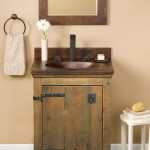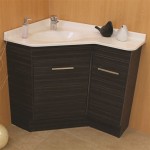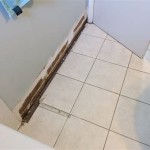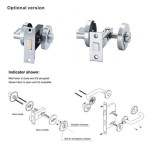How To Remove Black Stains in Bathroom Tiles
Black stains commonly found on bathroom tiles are often caused by mold and mildew growth. These fungi thrive in the humid and damp environment of a bathroom, and the porous nature of grout provides an ideal surface for them to colonize. Addressing these stains promptly and effectively is crucial, not only for aesthetic reasons but also for maintaining a healthy living environment. Mold and mildew can trigger allergic reactions and respiratory problems in susceptible individuals. This article provides a comprehensive guide on how to safely and effectively remove black stains from bathroom tiles.
Understanding the Nature of the Stain
Before attempting any cleaning method, it is important to identify the nature of the black stain. While most black stains in bathrooms are caused by mold or mildew, other potential culprits exist. These include hard water stains, soap scum buildup that has darkened over time, or even mineral deposits from certain types of water. Identifying the source of the stain will help determine the most effective cleaning solution and method.
Mold and mildew are fungi that reproduce through spores. These spores are ubiquitous and can be found in almost any environment. When these spores land on a damp surface with organic material to feed on (such as soap residue or dead skin cells), they begin to grow and form colonies. These colonies appear as black, green, or brown stains. Mold and mildew not only discolor surfaces but also produce a musty odor and can compromise indoor air quality.
Hard water stains are caused by mineral deposits, primarily calcium and magnesium, that are left behind when hard water evaporates. These stains typically appear as white or grayish deposits but can darken over time as they accumulate dirt and grime. Soap scum is a residue formed when soap reacts with hard water minerals. It appears as a white or gray film on surfaces and can also trap dirt and darken over time. Unlike mold and mildew, hard water stains and soap scum do not pose the same health risks, but they can be unsightly and difficult to remove.
Essential Tools and Safety Precautions
Before commencing the cleaning process, it's essential to gather the necessary tools and take appropriate safety precautions. The tools required will vary depending on the chosen cleaning method but generally include:
- Spray bottle
- Scrub brush (a grout brush with stiff bristles is ideal for grout lines)
- Sponges
- Microfiber cloths
- Rubber gloves
- Protective eyewear (goggles or safety glasses)
- Ventilation fan or open window
- Optional: Steamer
Safety is paramount when dealing with cleaning chemicals, especially those used to combat mold and mildew. Many cleaning agents contain harsh chemicals that can irritate the skin, eyes, and respiratory system. Always wear rubber gloves and protective eyewear to prevent direct contact with cleaning solutions. Ensure adequate ventilation by opening windows or using a ventilation fan to prevent the build-up of fumes. If using bleach-based cleaners, avoid mixing them with ammonia or other cleaning products, as this can create toxic gases. If you have sensitive skin or respiratory problems, consider wearing a mask or respirator to further protect yourself.
Effective Cleaning Methods for Removing Black Stains
Several cleaning methods can effectively remove black stains from bathroom tiles. The best method will depend on the severity of the stain, the type of tile and grout, and personal preference. Here are some of the most common and effective methods:
1. Bleach Solution
A bleach solution is a potent disinfectant that can effectively kill mold and mildew and remove black stains. It is important to use bleach cautiously and in a well-ventilated area.
To prepare a bleach solution, mix one part bleach with ten parts water in a spray bottle. Spray the solution onto the affected areas and let it sit for 10-15 minutes. Use a scrub brush to thoroughly scrub the grout lines and tile surfaces. Rinse the area thoroughly with clean water and dry with a microfiber cloth. Repeat the process if necessary. Bleach can discolor some surfaces so test in an inconspicuous area first. It is crucial to ensure adequate ventilation when using bleach and to avoid prolonged exposure to its fumes.
When using bleach on colored grout, it is important to test a small, inconspicuous area first to ensure that the bleach does not cause discoloration. Prolonged exposure to bleach can fade or lighten colored grout. For colored grout, consider using a milder cleaning solution or a specialized grout cleaner designed for colored grout.
2. Baking Soda Paste
Baking soda is a mild abrasive and natural deodorizer that can effectively remove stains and freshen up bathroom tiles and grout. It is a gentler alternative to bleach and is less likely to damage surfaces or cause irritation.
To make a baking soda paste, mix baking soda with enough water to form a thick paste. Apply the paste to the affected areas and let it sit for 30 minutes to an hour. Scrub the area with a scrub brush or sponge, paying particular attention to the grout lines. Rinse thoroughly with clean water and dry with a microfiber cloth. For stubborn stains, you can mix baking soda with a small amount of vinegar to create a fizzing action that helps to loosen the stains. However, use this mixture cautiously, as it can be abrasive and may damage some surfaces.
Baking soda is particularly effective at removing mild to moderate stains and is safe to use on most tile and grout types. It is also a good choice for cleaning near drains, as it can help to deodorize and unclog them.
3. Vinegar Solution
Vinegar is a natural acid that can dissolve mineral deposits, soap scum, and mild mold and mildew. It is a versatile cleaning agent that is readily available and environmentally friendly.
To prepare a vinegar solution, mix equal parts white vinegar and water in a spray bottle. Spray the solution onto the affected areas and let it sit for 5-10 minutes. Scrub the area with a scrub brush or sponge and rinse thoroughly with clean water. Vinegar has a strong odor, so ensure adequate ventilation when using it. The smell will dissipate over time. For more stubborn stains, you can heat the vinegar solution in the microwave for a minute or two before applying it to the affected areas. The heat will help to loosen the stains and make them easier to remove.
Vinegar is effective at removing hard water stains and soap scum in addition to mild mold and mildew. It is also a good choice for cleaning showerheads and faucets, as it can dissolve mineral deposits that clog the spray nozzles.
4. Hydrogen Peroxide
Hydrogen peroxide is a mild antiseptic and bleaching agent that can effectively remove stains and disinfect surfaces. It is a safer alternative to bleach and is less likely to cause irritation or damage surfaces.
To use hydrogen peroxide, pour a 3% solution directly onto the affected areas. Let it sit for 10-15 minutes. Scrub the area with a scrub brush or sponge and rinse thoroughly with clean water. Hydrogen peroxide is most effective on light-colored surfaces, as it can have a slight bleaching effect. Test in an inconspicuous area first. It is also important to protect your skin and eyes when using hydrogen peroxide, as it can cause irritation. Wear gloves and protective eyewear.
Hydrogen peroxide is effective at removing a variety of stains, including mold, mildew, and soap scum. It is also a good choice for disinfecting surfaces, as it kills bacteria and viruses.
5. Commercial Mold and Mildew Removers
Numerous commercial mold and mildew removers are available on the market. These products are specifically formulated to kill mold and mildew and remove stains. They typically contain stronger chemicals than household cleaning products and should be used with caution.
When using commercial mold and mildew removers, carefully follow the manufacturer's instructions. Wear gloves and protective eyewear, and ensure adequate ventilation. Apply the product to the affected areas and let it sit for the recommended amount of time. Scrub the area with a scrub brush or sponge and rinse thoroughly with clean water. Some commercial mold and mildew removers may have a strong odor, so it is important to ventilate the area well after use.
Choose a commercial mold and mildew remover that is appropriate for the type of tile and grout you have. Some products may be too harsh for certain surfaces and can cause damage or discoloration.
6. Steaming
Steam cleaning is a chemical-free method that can effectively remove dirt, grime, and mold from bathroom tiles and grout. Steam cleaners use hot steam to loosen stains and kill mold and mildew spores. Steamers are safe for most surfaces, but it's always a good idea to test in an inconspicuous spot first. It's important to note that while steaming can kill mold spores on the surface, it may not penetrate deep into porous grout. Very stubborn stains may still require additional cleaning solution.
To use a steam cleaner, fill the water tank according to the manufacturer's instructions. Attach the appropriate nozzle for cleaning tiles and grout. Direct the steam onto the affected areas, moving the nozzle slowly and steadily. The hot steam will loosen the stains and kill the mold and mildew spores. Wipe the area with a clean microfiber cloth to remove any residue. For grout lines, use a grout brush attachment to scrub the area while steaming.
Preventing Future Black Stain Growth
Preventing the recurrence of black stains is crucial for maintaining a clean and healthy bathroom environment. Several strategies can be implemented to minimize mold and mildew growth.
Maintaining good ventilation is essential. After showering or bathing, open a window or turn on the ventilation fan to remove excess moisture from the air. This will help to prevent mold and mildew from growing. Regularly clean bathroom surfaces to remove soap scum, dirt, and grime. Use a mild cleaning solution and a soft cloth or sponge. Pay particular attention to the grout lines, as they are prone to mold and mildew growth.
Dry shower walls and floors after each use. Use a squeegee or towel to remove excess water from the surfaces. This will help to prevent water from pooling and creating a damp environment that is conducive to mold and mildew growth. Repair any leaks or plumbing problems promptly. Leaks can create damp areas that promote mold and mildew growth. Check faucets, showerheads, and pipes for leaks and repair them as soon as possible.
Consider using mold-resistant grout and caulk. These products contain additives that inhibit the growth of mold and mildew. They are a good choice for new bathrooms or when replacing existing grout and caulk. Regularly inspect your bathroom for signs of mold and mildew growth. Look for black, green, or brown stains, as well as a musty odor. Address any problems promptly to prevent them from becoming more severe.
By diligently following these preventive measures, one can significantly reduce the likelihood of black stains reappearing on bathroom tiles and maintain a cleaner, healthier bathroom environment.

How To Clean The Grout Between Your Wall Tiles And Revamp Mouldy Mastic

How To Clean Tiles With Stubborn Stains Bathroom Hardone Forums

How To Keep Your Fridge Stain Free Check Out These Easy Tips Vooki In

How To Clean Mold In Shower Grout Tips And Tricks Certified Care

What Do About Black Mold In The Bathroom Bob Vila

Black Mold In The Shower How To Clean It Kitchen With Matt

3 Best Ways To Get Rid Of Hard Water Stains From Bathroom Tiles Kent

3 Ways To Remove Stains From Tiles Wikihow

How To Remove Hard Water Stain From Tile And Grout

How To Remove Hard Water Stains From Tile And Grout Woodard
Related Posts







